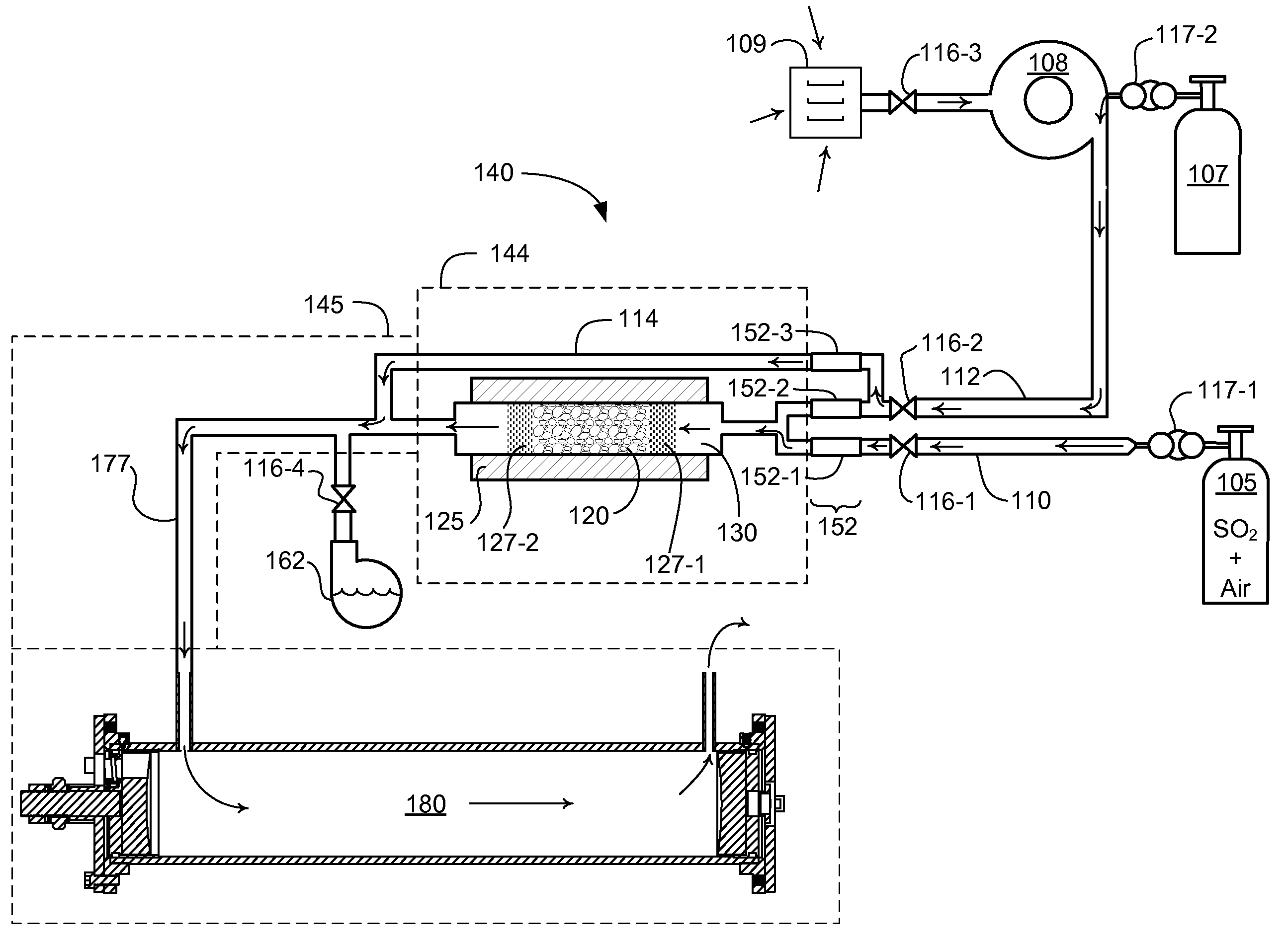Generation of sulfur trioxide and sulfuric acid
- Summary
- Abstract
- Description
- Claims
- Application Information
AI Technical Summary
Benefits of technology
Problems solved by technology
Method used
Image
Examples
Embodiment Construction
[0026]Embodiments herein include a novel process and apparatus for generating and maintaining sulfur trioxide gas. The generation system and process operate to provide sulfur trioxide calibration gas for calibrating sulfur trioxide detection devices. The system and process provides a known concentration of sulfur trioxide gas, which enables accurate calibration of measurement equipment. The system functions in part by utilizing a heated catalyst to generate a gas having a known concentration of sulfur trioxide, diluting the generated sulfur trioxide gas, controlling temperature and amount of moisture before and / or after conversion / dilution, and by locating the sulfur trioxide generator at a point of injection of a sulfur trioxide detection system that directly measures sulfur trioxide.
[0027]Now, more specifically, FIG. 1 depicts a sulfur trioxide generator 140. Generator 140 includes source 105. In one embodiment, source 105 is a cylinder containing a gaseous mixture of sulfur dioxi...
PUM
 Login to View More
Login to View More Abstract
Description
Claims
Application Information
 Login to View More
Login to View More - R&D
- Intellectual Property
- Life Sciences
- Materials
- Tech Scout
- Unparalleled Data Quality
- Higher Quality Content
- 60% Fewer Hallucinations
Browse by: Latest US Patents, China's latest patents, Technical Efficacy Thesaurus, Application Domain, Technology Topic, Popular Technical Reports.
© 2025 PatSnap. All rights reserved.Legal|Privacy policy|Modern Slavery Act Transparency Statement|Sitemap|About US| Contact US: help@patsnap.com



